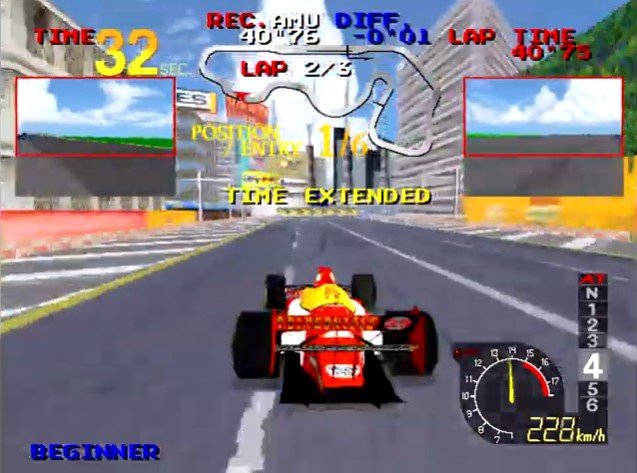Ace Driver
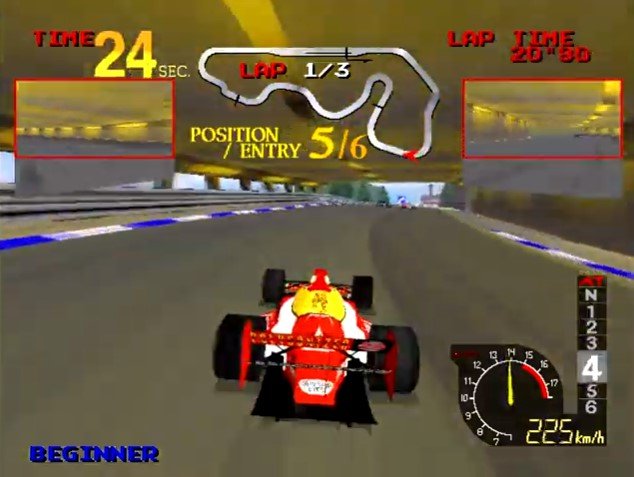
Ace Driver is a 3D racing video game.
Gameplay involves the player controlling a Formula One racer, the objective being to complete three laps of a race while in first place.
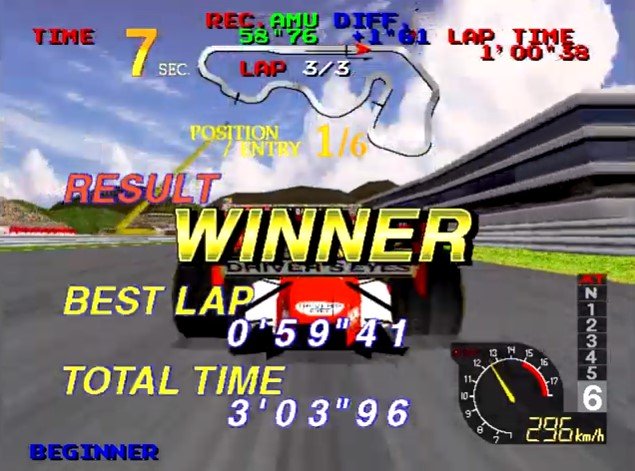
The player can choose one of eight playable vehicles, which is determined by which seat the player has chosen on the cabinet itself.
Cars also carry advertisements featuring names of older Namco video games and products, in a manner similar to the Ridge Racer series.
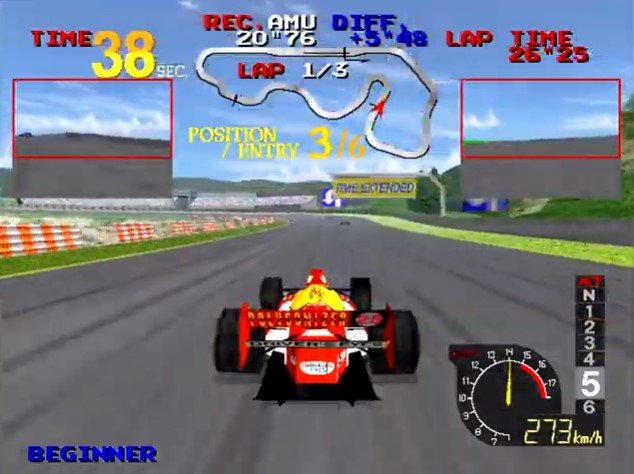
The player can also choose from three difficulty levels — Beginner, Expert, and Expert Pro Race Class. Namco produced two versions of the game, an SD model and a DX model.
The SD version features a basic sit-down structure, while the DX version features seats that rotate based on the player's actions in the game.
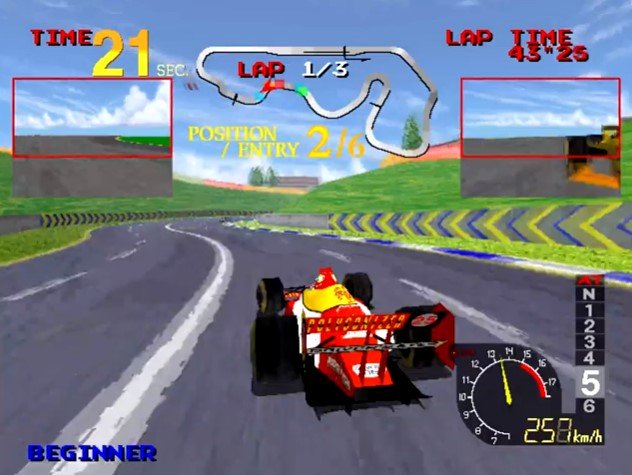
Both cabinets are linkable, and allow for an additional machine to be connected to it, which enables eight-person multiplayer.
It is a racing arcade game developed and published by Namco.
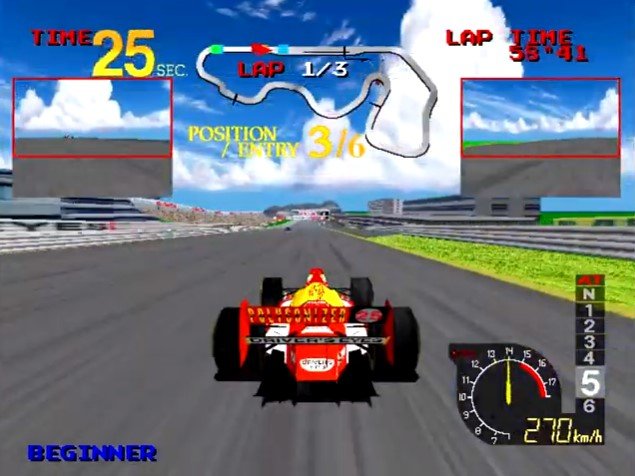
The player controls a Formula One racer, with the objective being to complete three laps of a race course and to avoid a collision with opponents and other obstacles.
Three difficulty levels are available, as is a mode to enable a gear shift. Similar to Namco's own Final Lap series, the arcade cabinet can be linked together with another unit to enable eight-person multiplayer.
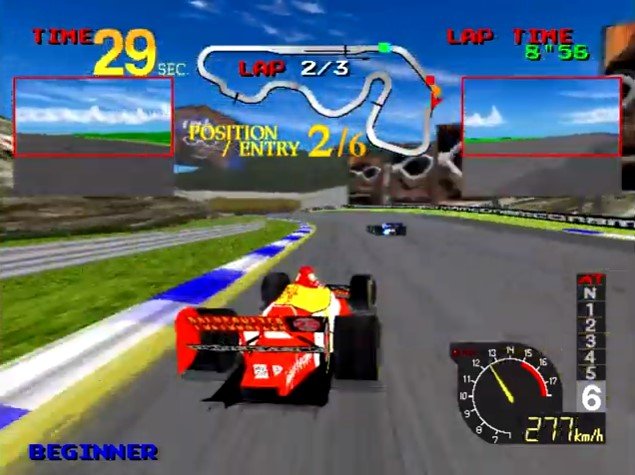
It ran on the Namco System 22 arcade hardware.
Development of the game was headed by Metro-Cross designer Tatsuro Okamoto, with assistance from Pole Position designer Shinichiro Okamoto.
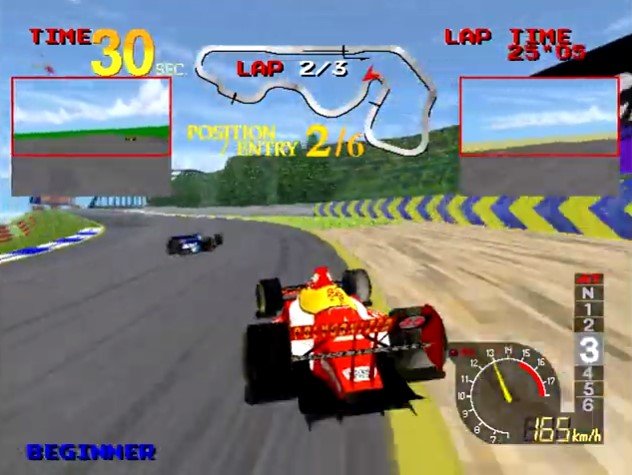
The arcade cabinet is much heavier than Namco's other machines, which made it difficult for easy shipping.
The development team took care into producing the game's controls to make them easy to use, which Okamoto recalls being as responsive as moving a shopping cart.
A "DX" version of the game was produced that featured rotating seats, however placing the game up against the wall perfectly made them dangerous to use, leading to small fences being placed towards the base of the cabinet.
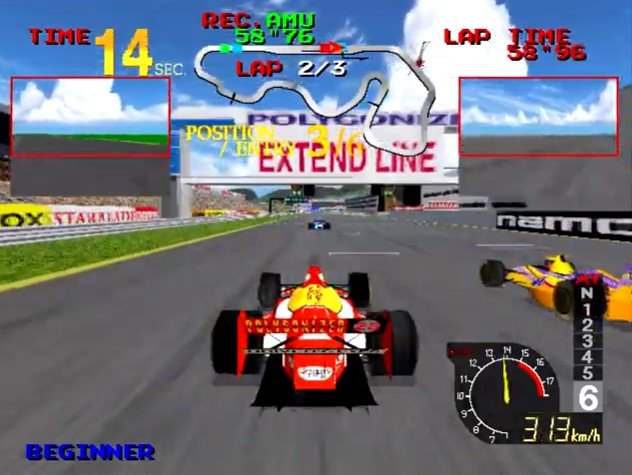
Ace Driver was a widespread success, winning the "Best Coin-Operated Game" award at the 76th Annual IAAPA tradeshow in November 1994.
Critics praised the game's realistic graphics, multiplayer and responsive controls, with some reviewers finding it to be superior than Sega's Daytona USA and Namco's own Ridge Racer.
It was followed by two sequels, Ace Driver: Victory Lap (1995) and Ace Driver 3: Final Turn (2008). A PlayStation home conversion announced in 1995 went unreleased.
